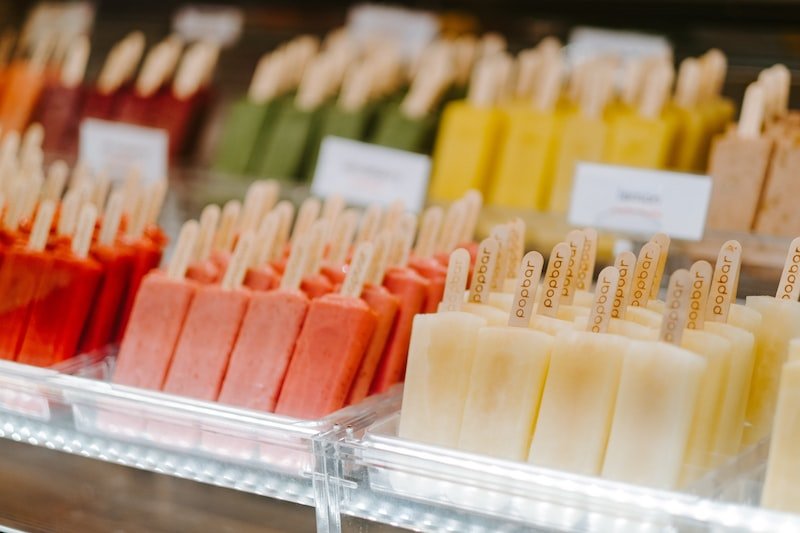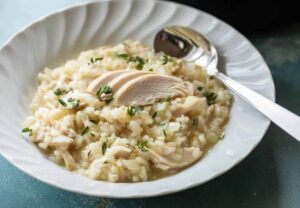On a steamy day in the middle of summer, nothing beats the flavor and coolness of a popsicle to satisfy your sweet tooth. And turning healthy fruit juice into a frozen treat like an ice pop is the best way to incorporate it into your diet because there is no other way.
On the other hand, if you’ve never attempted to make popsicles at home before, you might be concerned about the amount of time it will take.
How long does it take for popsicles to freeze completely? The time it takes homemade popsicles to freeze completely can range anywhere from four to eight hours. The thickness of the fruit pulp and the amount of water it contains, as well as the size of the popsicle, the type of fruit, and the amount of sugar it contains, all play a role in determining how long it takes for the popsicle to freeze.
Do you feel like treating yourself and your loved ones to some homemade popsicles this summer? This is our guide to the best way to freeze popsicles, including some helpful hints for freezing them quickly in case you are in a hurry and need them right away.
What Exactly Is a Popsicle?
Your family most likely refers to any frozen ice pop made from fruit juice as a popsicle, regardless of the type of pop you make at home.
People have been making fruity frozen treats in their own freezers for a long time, and the term “popsicle” has become common parlance.
However, “Popsicle” is a brand name; however, like many other brand names, it has become so well-known that it has replaced the original generic term for the product. Popsicle was originally a brand name for a frozen treat.
The term “popsicle” is used to refer to an ice pop that is made from fruit juice rather than water. This is similar to how we now commonly refer to Tupperware for any container made of plastic, Q-tips for things that shouldn’t be put in our ears, and Google for researching anything online.
However, only iced treats produced by Unilever, the company that holds the Popsicle patent, are allowed to use the name Popsicle in the manufacturing industry. When referring to their ice pops, all other brands are required to use a different term.
When you buy Popsicles or any other kind of fruity ice pop from the store, it will have already been frozen solid because it will have come from the freezer section.
You just need to make sure that it doesn’t defrost on the way home, and then you’ll have frozen treats that are ready to eat stored in the freezer.
Popsicles made at home are typically made by adding sugar to fruit puree and freezing the mixture. This is then poured into molds, each of which has a stick vertically positioned within it. These are put in the freezer and allowed to remain there until they are completely frozen.
A good popsicle, also known as an ice pop, should be silky and creamy, and it should be tender enough that your teeth can easily sink into it.
Something went wrong with your popsicles if they turned out to be solid clumps of ice when they were frozen. The consistency shouldn’t be grainy and icy like a lump of ice; rather, it should be smooth and creamy.
There is an almost infinite number of flavor combinations that can be used to make popsicles at home, ranging from simple fruit flavors to more unusual mixtures. Honey can be used in place of sugar by some people, and others prefer to enhance the creaminess of the dish by incorporating cornstarch or coconut milk.
How long does it take for popsicles to freeze completely?
If you are in a hurry, you can try some clever hacks to see if you can reduce the amount of time it takes for homemade popsicles to freeze. This time can range anywhere from four to eight hours.
When making popsicles, a mixture of fruit puree and sugar is poured into a mold, and a stick is placed in the middle of the mold.
The popsicles should be frozen in the freezer until they are completely solid; if you remove them from the freezer before they are completely frozen, you will end up with a mushy, runny, fruity mess.
The goal is to be able to remove the popsicle from the mold without breaking it, and for it to be frozen adequately so that you can finish eating it before it begins to melt and drip.
What Affects the Length of Time It Takes for Popsicles to Freeze
The temperature of your freezer and the amount of sugar in the fruit puree are the two primary elements that determine how long it takes popsicles to freeze completely.
If you want perfectly frozen fruit popsicles, the temperature in your freezer should be set to 0 degrees Fahrenheit or lower. This is due to the fact that fruit puree has a higher concentration of sugar than water does, which necessitates freezing at lower temperatures.
Because of this, it’s possible that you’ll need to temporarily lower the temperature of your freezer in order to get the popsicles to set. When your frozen treats have reached their desired consistency, you must remember to reset the oven to its regular temperature.
The length of time it takes fruit puree to freeze also depends on its consistency as well as the amount of sugar it contains. It will take longer for a popsicle that has a high sugar content to freeze, especially if the temperature of your freezer is not lowered when you put it in the freezer.
It will take even longer for this to freeze if you plan to serve “grown-up” popsicles at the party, which means they will contain alcohol.
How to Tell When Popsicles Have Reached Their Full Freezing Potential
When it comes to making popsicles, the most difficult part is determining when they are completely frozen. The very last thing you want is to remove one from its mold, only to have it crumble into pieces or begin dripping all over the place.
In point of fact, it is not always simple to determine whether or not popsicles have completely solidified. The first thing you should do is squeeze the mold; if it feels solid, there is a good chance that it is frozen. However, this trick is only applicable to molds that are flexible, such as silicone, and not to molds that are rigid, such as plastic or metal.
The following thing you can try is to wiggle or lift the stick very slightly to see if it still feels like it is fixed in place. If that is the case, there is an excellent possibility that the popsicles are frozen.
If the stick moves at all, this indicates that the center of the popsicle has not yet completely frozen over and become solid.
Finally, give the stick a slightly stronger pull; at this point, one of two possible outcomes will have occurred. You might be able to remove the popsicle without any damage from the mold, and then you can check to see if it has completely frozen over. At any point where it feels even slightly pliable, place it back into the mold.
If you think the popsicle has frozen solid but it is still in the mold, you can loosen it by running warm water over the outside of the mold for approximately ten seconds. If you do this, you should be able to remove the popsicle from the mold without the popsicle beginning to melt.
Detailed Instructions on How to Freeze Popsicles
There are a few things you can do to speed up the freezing process of your popsicles, which can be helpful if you’re in a hurry to eat your frozen treats.
To begin, popsicles with a higher percentage of water and a lower percentage of sugar will freeze more quickly. If you are in a hurry and want an ice pop, you can use these, but the texture and flavor might not be quite as rich or satisfying.
By lowering the temperature in the freezer, not only will the popsicles freeze more quickly, but they will also have that delightful texture of being soft but still frozen that we are all familiar and fond of.
Putting the ingredients through a rapid freezing process at extremely subzero temperatures is the method that is used to make commercial ice pops.
Put the filled popsicle mold in the coldest part of the freezer, which is typically in the middle of the back section of a chest freezer. This will ensure that the popsicles freeze completely. When it comes to an upright freezer, the top shelf or drawer is typically where you’ll find the coldest food.
Some freezers come equipped with a “fast-freeze” function, which is put to use whenever a large amount of food needs to be frozen in a short amount of time. If you need to quickly freeze a large quantity of ice pops in preparation for a party or barbecue, this might be helpful.
The rate at which popsicles freeze is also influenced by both their size and the thickness of their layers.
Because the freezing temperatures will reach the middle of the thinner ice pop much sooner than they will reach the center of the thicker ice pop, the thinner ice pop will freeze much faster. If you are in a hurry, choose the popsicle molds that are the thinnest among those you have available.
Regarding the topic of molds, if you are going to be making popsicles on a regular basis, you should think about purchasing a quick pop maker rather than using traditional molds.
This is a device that sits on top of a countertop and can freeze popsicles in just seven minutes; it is ideal for children who like to see the results of their efforts in the kitchen almost immediately.
Questions that are Related
Let’s take a look at some more questions about ice pops now that we’ve gotten your popsicles to the point where they’re perfectly frozen.
How do you recommend making popsicles with a creamy texture?
When you bite into a popsicle, you want the texture to be smooth and creamy. To achieve this, you need to reduce the amount of water in the popsicle and replace it with another type of liquid.
The formation of rigid crystals in water during the freezing process is one of the factors that contributes to the graininess of homemade popsicles.
The majority of popsicle recipes call for added sugar, which is a fantastic place to begin in terms of achieving a smooth texture. Your fruity ice pop will have a creamier consistency thanks to the sugar, which will reduce the grittiness of the frozen water crystals.
You can replace some of the water with a dairy product such as Greek yogurt to give the finished product a silkier texture. Popsicles can also have a silky, creamy consistency if a small amount of coconut milk is added to the mix. Coconut milk also freezes very well.
How are Jello popsicles made?
Making popsicles with Jello is a quick and easy alternative to making popsicles with fruit, and it’s also much less messy! They are great for freezing and take an incredibly long time to thaw, so on a hot summer day, you can give them to your children as a snack and they won’t have to worry about any drips.
Taking some Jello gelatin powder and following the instructions for making a liquid mixture are the only things that are required of you. After you’ve poured the mixture into the popsicle molds, put them in the freezer for the night.
The Jello will first solidify, and then after it has had time to freeze, the ice pops will be ready to enjoy.
If you want to give your Jello popsicles a bit more of a fruity flavor, you can put some chopped and peeled fruit in each mold along with the Jello. This is an excellent method for smuggling in some healthy ingredients into the treats you make for your family.


